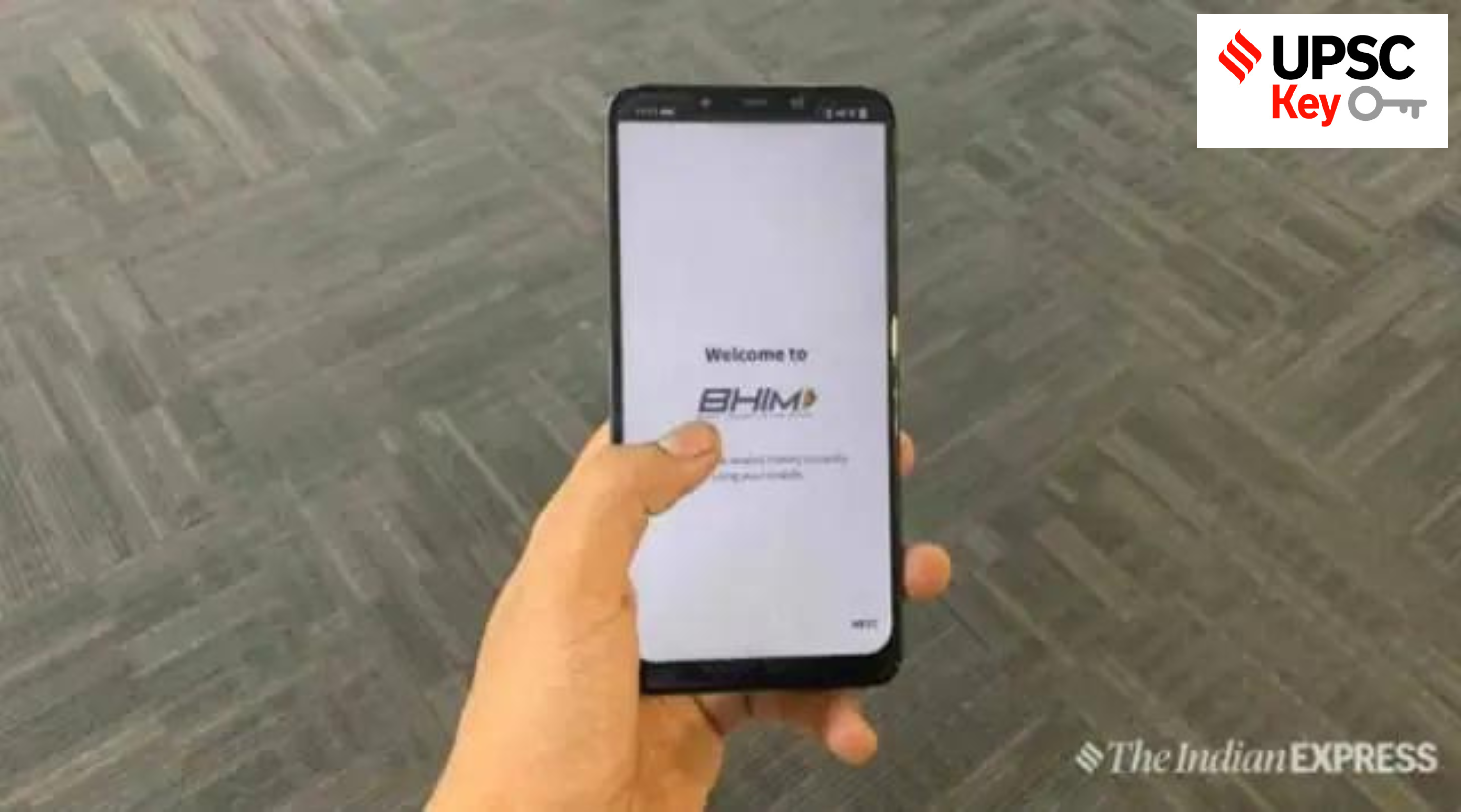[ad_1]
Syllabus:
Preliminary Examination: Current events of national and international importance.
Mains Examination: General Studies III: Achievements of Indians in science & technology; indigenization of technology and developing new technology.
Key Points to Ponder:
• What’s the ongoing story– A day after it launched the Aditya-L1 spacecraft, the country’s first mission to study the Sun, the Indian Space Research Organisation (ISRO) carried out the first orbit-raising manoeuvre Sunday. Stating that the satellite is “healthy and operating nominally”, the ISRO said the first Earth-bound manoeuvre has been “performed successfully” from ISTRAC, Bengaluru. The Aditya-L1 mission was launched from the Sriharikota spaceport shortly before noon Saturday and placed in an Earth orbit, 235 km x 19,500 km, an hour later.
• Aditya-L1-Know more in detail
• Aditya-L1-Know its key components
• Aditya-L1-Know the mission objective
• What is the L1 point of the Earth Sun system?
• Do You Know- According to NASA Website, there are five special points where a small mass can orbit in a constant pattern with two larger masses. The Lagrange Points are positions where the gravitational pull of two large masses precisely equals the centripetal force required for a small object to move with them. This mathematical problem, known as the “General Three-Body Problem” was considered by Italian-French mathematician Joseph-Louis Lagrange in his prize-winning paper (Essai sur le Problème des Trois Corps, 1772). Lagrange points, named after mathematician Josephy-Louis Lagrange who discovered them, are positions in a moving two-body system where forces acting on a third body of smaller mass cancel each other out. Being positioned at a Lagrange point makes sense because the spacecraft requires very little energy to just stay put and make continuous observations. At any other place, the spacecraft would feel additional force, and would need to expend energy to remain stationary relative to both the Earth and Sun.
Of the five Lagrange points, three are unstable and two are stable. The unstable Lagrange points – labelled L1, L2, and L3 – lie along the line connecting the two large masses. The stable Lagrange points – labelled L4 and L5 – form the apex of two equilateral triangles that have the large masses at their vertices. L4 leads the orbit of earth and L5 follows.
The L1 point of the Earth-Sun system affords an uninterrupted view of the sun and is currently home to the Solar and Heliospheric Observatory Satellite SOHO. The L2 point of the Earth-Sun system was the home to the WMAP spacecraft, current home of Planck, and future home of the James Webb Space Telescope. L2 is ideal for astronomy because a spacecraft is close enough to readily communicate with Earth, can keep Sun, Earth and Moon behind the spacecraft for solar power and (with appropriate shielding) provides a clear view of deep space for our telescopes. The L1 and L2 points are unstable on a time scale of approximately 23 days, which requires satellites orbiting these positions to undergo regular course and attitude corrections.
• Which Launch Vehicle is used for Aditya-L1?
• For Your Information-Indian scientists have so far observed the Sun through telescopes on the ground, and relied on data from solar missions launched by the United States, Europe, the United Kingdom, and Japan. “All these years, India has been observing the Sun using only ground-based telescopes, which have grown old now. As India lacked a large-scale modern observational facility, we were dependent on other sources for solar data. Aditya-L1 presents a unique opportunity to not only address the existing gaps but also complement with newer data to address the unsolved problems in solar physics,” Prof Dipankar Banerjee, director of the Aryabhatta Research Institute of Observational Sciences, Nainital, said. S Seetha, former director of ISRO’s Space Science Programme Office, said astronomy-based space missions are gaining importance “due to the new findings, and inspiration to the youth and general public it can provide”. “Science missions also take longer to develop, since technological development can be demanding,” Dr Seetha said.
• What is solar activity, solar prominence, solar flare and coronal mass ejection or CME?
• How solar activity, solar prominence, solar flare and coronal mass ejection or CME impacts Earth?
• Does all solar activity impact Earth? Why or why not?
• For Your Information- Solar activity associated with Space Weather can be divided into four main components: solar flares, coronal mass ejections, high-speed solar wind, and solar energetic particles. Solar flares impact Earth only when they occur on the side of the sun facing Earth. Because flares are made of photons, they travel out directly from the flare site, so if we can see the flare, we can be impacted by it.
Coronal mass ejections, also called CMEs, are large clouds of plasma and magnetic field that erupt from the sun. These clouds can erupt in any direction, and then continue on in that direction, plowing right through the solar wind. Only when the cloud is aimed at Earth will the CME hit Earth and therefore cause impacts. High-speed solar wind streams come from areas on the sun known as coronal holes. These holes can form anywhere on the sun and usually, only when they are closer to the solar equator, do the winds they produce impact Earth.
Solar energetic particles are high-energy charged particles, primarily thought to be released by shocks formed at the front of coronal mass ejections and solar flares. When a CME cloud plows through the solar wind, high velocity solar energetic particles can be produced and because they are charged, they must follow the magnetic field lines that pervade the space between the Sun and the Earth. Therefore, only the charged particles that follow magnetic field lines that intersect the Earth will result in impacts.
• What are coronal holes?
• What is a geomagnetic storm?
• What is a sunspot?
• What is solar maximum and solar minimum?
• What is the solar cycle?
• Do space weather effects / solar storms affect Earth?
• What are some real-world examples of space weather impacts?
• In what ways will the Aditya L1 Mission contribute to our understanding of the Sun and its phenomena?
• What are the other solar missions by different countries?
Other Important Articles Covering the same topic:
📍Solar Storm and Space Weather
📍The Sun up close: Aditya-L1 mission and its objectives
‘More like abduction’: Last Kuki-Zomis in Imphal locality say forced to evacuate
Syllabus:
Preliminary Examination: Current events of national and international importance.
Mains Examination:
• General Studies II: Functions and responsibilities of the Union and the States, issues and challenges pertaining to the federal structure, devolution of powers and finances up to local levels and challenges therein.
• General Studies III: Linkages between development and spread of extremism and Role of external state and non-state actors in creating challenges to internal security
• General Studies III: Role of external state and non-state actors in creating challenges to internal security.
Key Points to Ponder:
• What’s the ongoing story- IN THE four months since violence erupted in Manipur, thousands of people from the Kuki-Zomi community in Meiti-majority Imphal have left the city. However, a group of 24 Kuki-Zomis had stayed back in their locality, which they kept guarded with jagged gates.
These 24 residents were evacuated from Imphal by security personnel soon after midnight on Saturday. Jimmy Touthang, who was among them, alleged that the evacuation was forced and that it felt “more like an abduction”.
• Who are Kuki-Zomi?
• What are all of the ethnic communities present in Manipur?
• Manipur Violence-what you know till now?
• What do you understand by the term ‘ethnic violence?
• What is the cause of ethnic violence in Manipur?
• What was the triggering factor that escalated to so much violence in Manipur?
• ‘To solve the ongoing conflict in Manipur and assuage Kukis, the state has proposed to the Centre that the existing autonomous hill councils be give more autonomy’- What are autonomous hill (or district) councils?
• How was autonomous hill (or district) councils adopted in the Constitution?
• What are Manipur’s hill councils?
• For Your Information-Although Manipur went through the same phase of governance division when the British took over the region in 1891, somehow its hill areas were never covered under the Sixth Schedule. The Maharaja of Manipur had in 1939 agreed with the British to exclude the hill areas of the region from his direct control and governance. In fact, the demand for a separate administration for hill areas has been raised in the region since the early 1960s. It was in this context that in December 1971, Parliament passed The Manipur (Hill Areas) District Council Act, paving the way for creation of ADCs in Manipur’s hill areas. These regions constituted 90% of its geographical area, inhabited by tribes such as Nagas, Kukis, Zomis, Hmars, etc. At that time, Manipur was a Union Territory. Here too the stated aim of the legislation was to grant the hill people a chance at self-governance, protect their identity and culture, and to give them rights over the management of their resources. The councils are to have not more than 18 members who are to be elected and enjoy powers of taxation, maintenance of properties, allotment of land, management of forests, regulation of cultivation, and legislative authority on matters of marriage, inheritance, social customs and appointment of chiefs.
• How are Manipur ADCs different from Sixth Schedule ADCs?
• How have the ADCs evolved in Manipur?
• What is the Sixth Schedule?
• For Your Information- The Sixth Schedule under Article 244 provides for the formation of autonomous administrative divisions — Autonomous District Councils (ADCs) — that have some legislative, judicial, and administrative autonomy within a state.
ADCs have up to 30 members with a term of five years, and can make laws, rules and regulations with regard to land, forest, water, agriculture, village councils, health, sanitation, village- and town-level policing, inheritance, marriage and divorce, social customs and mining, etc. The Bodoland Territorial Council in Assam is an exception with more than 40 members and the right to make laws on 39 issues.
The Sixth Schedule applies to the Northeastern states of Assam, Meghalaya, Mizoram (three Councils each), and Tripura (one Council).
• What do you understand by ‘Insurgency’?
• Why is it called ‘Insurgency’?
• How Insurgency is different from Guerrilla warfare?
• What is the difference between militant and insurgent? How militancy is different from insurgency?
• Know these terms-Terrorism, Insurgency, Belligerency and Civil war
• What are the roots of the Kuki insurgency?
• Manipur has been in the cross-currents of India’s oldest insurgent movements-why?
• History of conflict in Manipur-Know in detail
• The Indian government enacted the Armed Forces Special Powers Act in 1958 in reaction to the Naga separatist activity, initially implementing it across Nagaland and parts of Manipur-How these States responded?
• What do you understand by ‘disturbed area’?
Other Important Articles Covering the same topic:
THE EDITORIAL PAGE
Syllabus:
Preliminary Examination: Current events of national and international importance.
Mains Examination: General Studies II: Bilateral, regional and global groupings and agreements involving India and/or affecting India’s interests.
Key Points to Ponder:
• What’s the ongoing story– Ashok Gulati , Purvi Thangaraj Writes: Chandrayaan-3’s successful landing on the moon, and this quarter’s (Q1FY24) GDP growth rate of 7.8 per cent, will bolster India’s image in the upcoming G20 final meetings, scheduled on September 9-10. India can showcase not only its scientific prowess in space technologies but also the management of its economy, which looks set to clock the highest growth rate amongst G20 countries for two successive years.
• India and G20 Presidency-know more in detail
• ‘India’s geopolitical stature after G20 summit’-discuss
• How can India with its G20 presidency walk the talk to benefit the masses in the Global South for whom food and nutritional security is still a challenge, one made worse by climate change?
• What is ‘Deccan High-Level Principles’?
• For Your Information-The Deccan High Level Principles mooted by New Delhi in response to the global food crisis have been discussed during the Agriculture Deputies Meetings under the Agriculture Working Group and now are placed before the G20 Agriculture Ministers, who are meeting in Hyderabad (June 15-17). The Deccan High-Level Principles are: One, facilitate humanitarian assistance to countries and populations in vulnerable situations; two, enhance availability and access to nutritious food and strengthen food safety nets; three, strengthen policies and collaborative actions for climate-resilient and sustainable agriculture and food systems; four, strengthen resilience and inclusivity in agriculture and food value chains; five, promote the one health approach; six, accelerate innovation and the use of digital technology, and seven, scale-up responsible public and private investments in agriculture.
• How India can address food security and climate change challenges?
• “If India can demonstrate the application of precision technologies in space, with Chandrayaan-3 by spending a fraction of the cost that the US would incur for the same feat, why can’t the country use the same principle to develop technologies to help farmers overcome challenges of extreme weather events”-Comment
• What India can do to develop technologies to help farmers overcome challenges of extreme weather events?
• “Biofortification is much more cost-effective compared to supplementing rice with nutrients, say iron, in public distribution system. But India spends only 0.48 per cent of agri-GDP on agri-R&D. This needs to be doubled, if the country has to play the role of a leader”-Discuss
• Is it possible for India to turn this aspirational framework into a reality at home?
• “Current policies of open-ended and assured procurement with Minimum Support Price (MSP) for say paddy and wheat, coupled with massive subsidies on fertilisers, power, and irrigation, have caused damage to our natural resources, especially soil, water, air, and biodiversity”-How far you agree with the same?
Other Important Articles Covering the same topic:
📍Agri meet sees consensus emerging on food security principles, millet initiative
THE IDEAS PAGE
Syllabus:
Preliminary Examination: General issues on Environmental ecology, Bio-diversity and Climate Change – that do not require subject specialization.
Mains Examination: General Studies III: Conservation, environmental pollution and degradation, environmental impact assessment.
Key Points to Ponder:
• What’s the ongoing story– Vikram S Mehta writes: “For every complex problem, there is an answer that is simple, clear and wrong”. I am reminded of this comment, attributed to the journalist H L Mencken whenever I reflect on the “green energy transition” with one caveat. The answer is not wrong. It is just not good enough to solve the problem.
• “The energy transition is no doubt complex”-why?
• What is ‘Transition to clean energy’?
• What is India’s energy transition plan?
• What is India’s New Renewables Energy Target?
• How can net zero be achieved?
• Public-Private partnership frameworks to achieve ‘net zero’-issues and challenges
• India’s emission Status-Present Scenario
• For Your Information-Two verities frame the green energy transition. One, it is taking place at a time when the energy order has fragmented. Global leaders remind each other that climate change recognises no national borders. Notwithstanding that resource nationalism is back on their agenda, many governments are incentivising investors to create green energy capacity in their national backyard and are raising high fences to protect the investment. The standout example is the Inflation Reduction Act enacted by the US Congress in 2022. The value of the tax credits, subsidies, guarantees and grants on offer under this act is $365 billion — possibly the most generous green energy package ever legislated. Europe has also put in place a similar set of incentives, albeit less generous and the production-linked incentive scheme in India is cut from a similar mould.
Two, it has distributional consequences. The transition will not be socially neutral. There will be winners and losers. There will be, for instance, less need for coal miners and oil riggers. And more for engineers who can install and maintain solar modules, wind turbines and batteries. Those who stand to lose will resist change. Governments face the social choice of deciding how to distribute the costs and benefits. Keeping in mind the fact that global warming cannot be tackled without shifting away from fossil fuels, the one lacuna in the answer provided so far is, in my view, the absence of institutions of governance that reflect these verities.
• “The phrase “green energy transition” lacks conceptual clarity”-Comment
Other Important Articles Covering the same topic:
📍Why India’s approach to renewable energy is effective
EXPLAINED
Bumper crops, yet high cereal prices
Syllabus:
Preliminary Examination: Economic and Social Development
Mains Examination: General Studies III: Indian Economy and issues relating to planning, mobilisation of resources, growth, development and employment, Major crops-cropping patterns in various parts of the country
Key Points to Ponder:
• What’s the ongoing story– Cereal inflation based on the official consumer price index has been ruling at double digits year-on-year since September 2022. For a majority of Indians — the 813.5 million persons covered under the National Food Security Act (NFSA), out of a total 1,400 million-plus population — that didn’t matter beyond a point, until recently.
• What is the food inflation rate in India?
• Why cereal inflation is high?
• Salient features of the National Food Security Act, 2013
• What is National Food Security Act, 2013 (NFSA) eligibility?
• What Schedule II of the National Food Security Act says?
• Do You Know-All NFSA beneficiaries, before January 2023, were getting 10 kg of rice or wheat per month practically free of cost. Since that more or less met their entire requirement — the last national sample survey of 2011-12 revealed the per capita cereal consumption at 11.22 kg for rural and 9.28 kg for urban India — they hardly had to buy grain from the open market.
But from the new calendar year, the NFSA entitlement was restored to the original 5 kg/person/month level prevailing prior to April 2020. The same ration cardholders, now having to purchase rice and wheat from the open market, are feeling the pinch of cereal inflation, which has nearly doubled from 6.9% to over 13% between July 2022 and July 2023. According to the department of consumer affairs, the all-India modal (most-quoted) retail price of rice on September 3 was Rs 40 per kg, compared with Rs 35 a year ago and Rs 30 two years ago, with these at Rs 28, Rs 25 and Rs 22 per kg for wheat.
• The public distribution system (PDS) emerged as the most effective social safety net during the pandemic-How?
• “The Centre’s actions point to grain shortage not just in public warehouses, but also in the open market”-Discuss
• According to the author, what is the paradox in this?
• If there is more wheat and rice in the market, shouldn’t that exert downward pressure on prices?
• What is open market sale scheme domestic?
• What are the objectives of open market sale scheme?
• How does the government procure wheat and rice?
• For Your Information-The Open Market Sale Scheme entails the periodic sale of excess food grains, particularly wheat and rice, from the central pool by the Food Corporation of India (FCI) to various entities such as dealers, bulk consumers, and retail chains. These sales are conducted at predetermined prices. The Corporation use e-auctions as a means to facilitate the purchase of specified quantities by open market bidders, with prices initially established at the commencement of a cycle and subject to periodic revisions. Typically, states possess the authority to acquire food grains via the Open Market Sale Scheme (OMSS) without engaging in auctions, in order to fulfil their requirements beyond the allotment received from the central pool for distribution among beneficiaries of the National Food Security Act (NFSA). The procurement of food grains, such as wheat and paddy, for the central pool is conducted throughout the Rabi and Kharif marketing seasons by the Food Corporation of India (FCI) and State corporations. This process is carried out in accordance with procurement estimates that are determined by the government of India prior to the commencement of these seasons. These purchases are made in accordance with the Minimum Support Price. The government is required to allocate a portion of the central pool to reserve wheat and rice for the 80 crore beneficiaries who are entitled to receive free food grains under the National Food Security Act (NFSA). Additionally, the government must maintain a buffer stock and ensure the availability of surplus food grains for commercial purposes. The proposed concept entails the activation of the Open Market Sale Scheme (OMSS) during the lean season, which refers to the period between harvests. The primary objective is to enhance and manage the domestic supply and availability of the two grains, hence reducing their prices in the open market. Consequently, this scheme serves as a strategy to mitigate food grain inflation.
• How has the Centre decided the Open Market Sale Scheme (OMSS)?
• Wheat Production in India-Rabi or Kharif Crop?
• What is the procurement scale against the total production of wheat in India?
• From how many states is wheat procured for the central pool?
• How much wheat is procured for the central pool by the FCI every year?
• What is the procurement scale against the total production of wheat in India?
• What is the share of wheat contribution of various states to the central pool?
• Wheat production in India-Know the statistics
• Wheat Production in India-Know all the facts like Highest producing States, Geography and Environment associated with Wheat Production like Soil, temperature, Rainfall and Humidity etc.
• MSP (minimum support price) and effectiveness of MSP implementation
• How MSP is calculated (paid out costs, labour etc.) and Crops covered under the MSP
• Food Corporation of India (FCI)-About, Role, Functions
Other Important Articles Covering the same topic:
📍Explained: How the govt procures wheat, why and for whom, and at what price
📍Express View on Centre’s grain policy: Rice and fall
Syllabus:
Preliminary Examination: Current events of national and international importance.
Mains Examination: General Studies III: Awareness in the fields of IT, Space, Computers, robotics, nano-technology, bio-technology and issues relating to intellectual property rights.
Key Points to Ponder:
• What’s the ongoing story-An article published in the Yale Medicine Review on August 31 has noted the rise of Covid-19 infections in multiple countries, driven by a new Coronavirus variant called BA.2.86, which is informally being termed ‘Pirola’. While the report says that it is too early to know if this strain is any more transmissible than other ones, there may be a reason to worry. The report says it has “more than 30 mutations to its spike protein compared to XBB.1.5, a variant of Omicron that had been the dominant strain in the United States… The spike protein is how the coronavirus enters human cells.”
• ‘Pirola’-what you know about this variant?
• Pirola has been witnessed in the US, the UK, and other countries, in unrelated cases-Know in detail
• How do viruses mutate, exactly?
• What differentiates Pirola?
• For Your Information- Speaking to the Yale School of Medicine, Anne Hahn, a postdoctoral associate who leads the Yale SARS-CoV-2 Genomic Surveillance Initiative, said that this is a “much more interesting subvariant”, when compared to the Omicron subvariant known as XBB.1.9. That variant initially spread quickly but did not overwhelm populations at a significant scale.
The same report noted that it has been detected by surveillance labs in Israel and Denmark and later in labs in England, South Africa, and the United States.
According to Fortune, new data released on Twitter on Friday evening by Ben Murrell, a researcher at the Karolinska Institutet in Sweden, showed that blood samples taken last week performed better than expected when it came to neutralising BA.2.86.
Dr Eric Topol, a professor of molecular medicine at Scripps Research and founder and director of the Scripps Research Translational Institute, said in a tweet that the findings offer a more positive outlook for how new boosters might protect against the highly mutated variant.
So far, no deaths have been reported among cases, according to the WHO. As of last week, an elderly man in Europe was hospitalised with the strain, according to Fortune. As of a few weeks ago, rising Covid-19 cases in the US were mostly a result of the Eris variant.
• What precautions need to be kept in mind against this new variant?
Other Important Articles Covering the same topic:
📍New Covid-19 variant BA.2.86: All you need know about this Omicron sub-variant
One nation, one poll: When does a change in Constitution need states’ nod?
Syllabus:
Preliminary Examination: Indian Polity and Governance-Constitution, Political System, Panchayati Raj, Public Policy, Rights Issues, etc.
Mains Examination: General Studies II: Functions and responsibilities of the Union and the States, issues and challenges pertaining to the federal structure, devolution of powers and finances up to local levels and challenges therein
Key Points to Ponder:
• What’s the ongoing story– The Centre on Saturday (September 2) set up a committee to examine various aspects, both legal and logistical, for implementing the “one nation, one election” idea.
The Law Ministry has outlined seven terms of reference for the eight-member panel headed by former President Ram Nath Kovind and including Union Home Minister Amit Shah. One of the terms of reference is to examine if a constitutional amendment to facilitate simultaneous polls would have to be ratified by the states.
• What is “one nation, one election”?
• What are the arguments around holding simultaneous elections?
• But when elections were first held in independent India, were they not simultaneous to begin with?
• Has the idea of simultaneous polls been explored before?
• When and how did the idea of simultaneous Lok Sabha, Assembly and local body polls come up?
• How exactly will holding Lok Sabha and Assembly polls together help?
• What have political parties said? What is the system in other countries?
• What will happen if India does decide on simultaneous elections?
• How Constitution will be amended for the same?
• What are the process of amendment?
• Do You Know-The Constitution prescribes three different standards for amending different provisions.
Simple majority: Several provisions of the Constitution can be amended by the simple legislative process adopted in passing any ordinary legislation in Parliament. This is done through a majority of those present and voting and does not require a quorum.
Interestingly, Article 368 does not directly make a list of such ‘less significant’ provisions. However, throughout the Constitution, such provisions are excluded from the purview of Article 368, creating a separate category. Versions of the text “no such law shall be deemed to be an amendment of the Constitution for the purposes of Article 368” is found in several provisions, including in Article 4, which provides that Parliament can make changes relating to organisation of states. Changing of names of states, admitting new states to the Union, and re-drawing the boundaries of states fall under this category.
Special majority: For amending provisions that do not fall under the first category, Article 368 requires that the amendment Bill is passed in both Houses of Parliament by a majority of not less than two thirds of the members present and voting. Under Rule 158 of the Lok Sabha Rules, ‘total membership’ means the total number of members of the House, irrespective of any vacancies or absentees at the moment.
Ratification by states: A third category of provisions need not just a special majority to be amended, but also require ratification by the legislatures of at least half of the states. Only after the states’ ratification can such an amendment be presented to the President for assent.
While the first two categories are not specifically listed under Article 368, the provisions that require ratification are listed out. These involve the federal character of the Constitution and are referred to as “entrenched provisions”.
For example, The Constitution (Ninety-ninth Amendment) Act, which established the National Judicial Appointments Commission (NJAC), was passed by both Houses of Parliament and ratified by 16 state legislatures before it received the President’s assent on December 31, 2014. (On October 16, 2015, a five-judge Bench of the Supreme Court, by a 4-1 majority, struck down both The Constitution (Ninety-ninth Amendment) Act, 2014 and The National Judicial Appointments Commission Act, 2014 — which had come into effect in April 2015 — as unconstitutional, and revived the collegium system of appointment of judges to the higher judiciary.)
Again, The Constitution (One hundred and first Amendment) Act, 2016, which introduced the Goods and Services Tax regime, was ratified by a large number of states and Union Territories before it received the President’s assent on September 8, 2016. (This Bill was first introduced in Lok Sabha as The Constitution (One hundred and twenty-second Amendment) Bill on December 19, 2014, and was referred to a Select Committee of Parliament before being finally passed by both Houses in August 2016. Several other states ratified the Act subsequently.)
In Kihoto Hollohan v Zachillu, a 1992 decision of the Supreme Court, the question of ratification emerged as important. One of the grounds on which the constitutionality of the Tenth Schedule — which deals with disqualification of elected representatives — was challenged was that the amendment was not ratified by the states. The amendment, among other things, sought to bar jurisdiction of courts in any matter connected with the disqualification process. This tinkered with one of the six aspects that require ratification by half the states — jurisdiction of the Supreme Court and the High Courts. The Supreme Court struck down this part of the amendment while upholding the validity of the Tenth Schedule.
Other Important Articles Covering the same topic:
📍Govt forms committee on simultaneous elections: What is the idea, and the arguments around it?
ECONOMY
As UPI crosses 10 bn mark, a look at India’s key foreign policy sell: digital public infra
Syllabus:
Preliminary Examination: Economic and Social Development
Mains Examination: General Studies III: Indian Economy and issues relating to planning, mobilization, of resources, growth, development and employment.
Key Points to Ponder:
• What’s the ongoing story– The United Payments Interface (UPI) crossed 10 billion in the volume of transactions in August, marking a significant milestone for the payments service which is not just being used extensively domestically — at least for small ticket transactions — but has also become a key part of India’s foreign policy outreach. Throughout India’s presidency of the G20, it has played up the country’s efforts at creating digital public infrastructure — of which UPI is a key part — and has also explored other nations’ interest to adopt the underlying technologies that power India’s digital public infrastructure (DPI) push, which it brands as the India Stack.
• What is digital public infrastructure (DPI)?
• What makes for a strong digital public infrastructure (DPI)?
• How does digital public infrastructure (DPI) affect a country’s economy?
• What is Unified Payments Interface?
• Who developed the Unified Payments Interface?
• Brainstorm some important features of UPI
• What achievements has UPI made?
• For Your Information- Unified Payments Interface (UPI) transactions crossed 10 billion mark in August, the National Payments Corporation of India (NPCI) said on Thursday. NPCI is an umbrella organisation for all retail payment systems in India. UPI is used for immediate money transfer through mobile devices round the clock. According to the NPCI data, the UPI transactions on August 30 stood at 10.24 billion. In value terms, the transaction had totalled Rs 15,18,456.4 crore. The number of UPI transactions in July was 9.96 billion (996.4 crore), up from 9.33 billion in June. In value terms, the transactions totalled Rs 15,33,645.20 crore. UPI (Unified Payment Interface) is an instant payment system that allows users to instantly transfer money to any bank account.
• Know in detail about National Payment Corporation of India (NPCI)
• How UPI is a part of India’s foreign policy?
• Why is digital public infrastructure (DPI) important for countries facing crises like climate disasters, pandemics, and other emergencies?
• Can digital public infrastructure (DPI) help us reach the Sustainable Development Goals?
Other Important Articles Covering the same topic:
📍Decoding Unified Payments Interface system: A step towards cutting cash in the economy
Previous Year Prelims Questions Based on Similar theme:
Most Read
📍Which of the following is a most likely consequence of implementing the ‘Unified Payments Interface (UPI)? (Please refer Prelims GS-1 2017 question Paper for complete question)
📍Consider the following statements:
1. National Payments Corporation of India (NPCI) helps in promoting the financial inclusion in the country.
2. NPCI has launched RuPay, a card payment scheme.
Which of the statements given above is/are correct? (Please refer Prelims GS-1 2017 question Paper for complete question)
For any queries and feedback, contact priya.shukla@indianexpress.com
The Indian Express UPSC Hub is now on Telegram. Click here to join our channel and stay updated with the latest Updates.
Subscribe to our UPSC newsletter and stay updated with the news cues from the past week.
[ad_2]
If you want to register your marriage in thane visit : https://courtmarriageregistration.co.in/court-marriage-registration-in-thane
Source link







